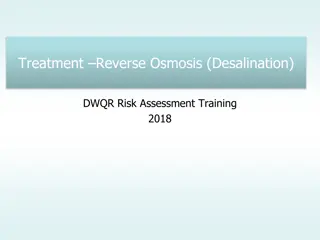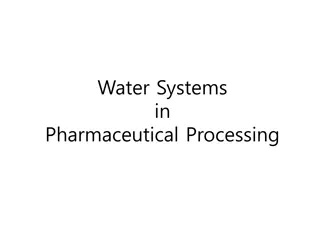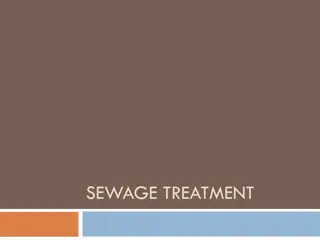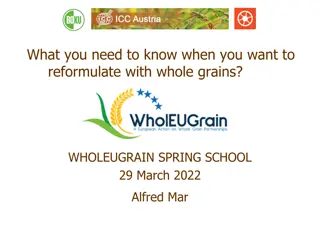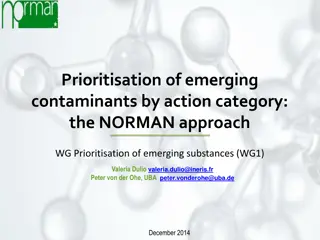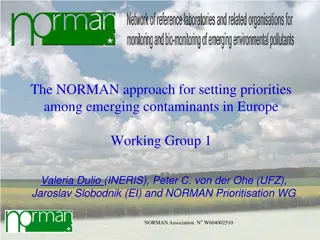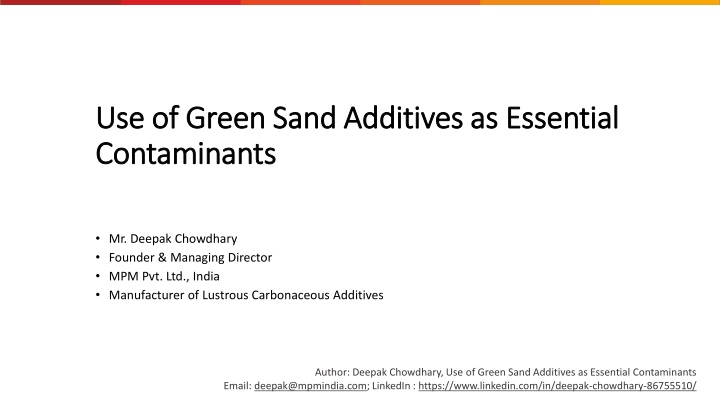
Optimizing Green Sand Additives for Foundry Molding Efficiency
Explore the essential role of green sand additives in foundry molding, as explained by Mr. Deepak Chowdhary. Understand how additives control molding sand properties, the challenges of using the right levels, and the impact of contaminants for efficient casting processes.
Download Presentation

Please find below an Image/Link to download the presentation.
The content on the website is provided AS IS for your information and personal use only. It may not be sold, licensed, or shared on other websites without obtaining consent from the author. If you encounter any issues during the download, it is possible that the publisher has removed the file from their server.
You are allowed to download the files provided on this website for personal or commercial use, subject to the condition that they are used lawfully. All files are the property of their respective owners.
The content on the website is provided AS IS for your information and personal use only. It may not be sold, licensed, or shared on other websites without obtaining consent from the author.
E N D
Presentation Transcript
Use Use o of Green Sand f Green Sand Additives Contaminants Contaminants Additives a as s Essential Essential Mr. Deepak Chowdhary Founder & Managing Director MPM Pvt. Ltd., India Manufacturer of Lustrous Carbonaceous Additives Author: Deepak Chowdhary, Use of Green Sand Additives as Essential Contaminants Email: deepak@mpmindia.com; LinkedIn : https://www.linkedin.com/in/deepak-chowdhary-86755510/ deepak@mpmindia.com https://www.linkedin.com/in/deepak-chowdhary-86755510/
A Perspective on Additive Control in Molding Sand Raw Sand The most refractory material in the sand mold Bentonite The most cost effective high temperature, sustainable binder for the raw sand Water Principal additives used for preparing Sand Molding Essential to activate the gelling/binding properties of Bentonite Coal Dust Most effective low cost Lustrous Carbon de-oxidant to help prevent sand-metal reaction Ancillary Additives Dextrin, Wood Flour, etc., used based on the specific requirement The straight forward objective of this simple mix is to prevent Metal-Mold reaction However, this simple mix of these 4 basic additives becomes complex when exposed to the dynamics of the circulating system sand of a foundry Author: Deepak Chowdhary, Use of Green Sand Additives as Essential Contaminants Email: deepak@mpmindia.com; LinkedIn : https://www.linkedin.com/in/deepak-chowdhary-86755510/ deepak@mpmindia.com https://www.linkedin.com/in/deepak-chowdhary-86755510/
The Need for the Perspective on Additive Control MAJOR EFFECT OF MORE THAN NECESSARY USE OF ADDITIVES Uneven Compaction of the Mold Increase in Total Surface Area (TSA) of the Total Sand Reduced Permeability Increase in Moisture Demand/Temper Water The Big ? Increased Sand Sticking Lower Flowability of Sand What is the Optimum Additive Consumption? Lowering the Fusion Point of the Molding Sand/Reduced Sand Refractoriness Author: Deepak Chowdhary, Use of Green Sand Additives as Essential Contaminants Email: deepak@mpmindia.com; LinkedIn : https://www.linkedin.com/in/deepak-chowdhary-86755510/ deepak@mpmindia.com https://www.linkedin.com/in/deepak-chowdhary-86755510/
Challenge of Using Optimum Level of Additives Return Sand Measurements the ARBITRAGE GAP Varying Total Surface Area of Sand Return Sand Hopper Varying Product Mix Return Sand Cycles and Resultant Layers in the Return Sand hopper Inter- relationship Between Sand Properties Varying Core sand Influx Multivariate Cause and Effect Between Sand Parameters and Additives Impact on Casting Defects Reactive Decision on Additions Author: Deepak Chowdhary, Use of Green Sand Additives as Essential Contaminants Email: deepak@mpmindia.com; LinkedIn : https://www.linkedin.com/in/deepak-chowdhary-86755510/ deepak@mpmindia.com https://www.linkedin.com/in/deepak-chowdhary-86755510/
Effect of Interrelationship Between Sand Properties Effect of Interrelationship Between Sand Properties The change in any property can impact several sand properties simultaneously SPECIMEN WEIGHT SHEAR STRENGTH COMPACTABILITY FRIABILTY INDEX SHATTER INDEX PERMEABILITY GCS4. Slide 4 ACTIVE CLAY INERT FINES MOISTURE INCREASE *PARAMETERS WTS LOI GFN TEMPER MOISTURE X X X X X ACTIVE CLAY X X X X Legend Likely Direction Increase Decrease No Change *Table is a partial list of sand parameters Author: Deepak Chowdhary, Use of Green Sand Additives as Essential Contaminants Email: deepak@mpmindia.com; LinkedIn : https://www.linkedin.com/in/deepak-chowdhary-86755510/ deepak@mpmindia.com https://www.linkedin.com/in/deepak-chowdhary-86755510/
Impact of Additives Interrelationship Between Sand Properties Impact of Additives & Interrelationship Between Sand Properties Compactabili Permeability Wet Tensile Moisture % Active Clay Specimen Inert Fines PH Value Friability Strength Strength Shatter Increase AFS No. Weight Shear Index L O I V M GCS ty ADDITIVES SODIUM BASE BENTONITE O O X X O X LUSTROUS CARBON ADDITIVE X X X O FRESH SILICA SAND - HIGH GFN NO. O O O O O X O O X X X X Active Clay Compactability WTS Inert Fines GCS GSS Control Sand Parameters Decrease in Bentonite Moisture Shatter Index Friability Specimen Weight pH value Permeability Author: Deepak Chowdhary, Use of Green Sand Additives as Essential Contaminants Email: deepak@mpmindia.com; LinkedIn : https://www.linkedin.com/in/deepak-chowdhary-86755510/ deepak@mpmindia.com https://www.linkedin.com/in/deepak-chowdhary-86755510/
TSA Total Surface Area of Molding Sand TSA Total Surface Area of Molding Sand By far, the most important and overlooked impactor of variation in green sand preparation, is the Total Surface Area (TSA) of the molding sand Total Surface Area relationship to Core Sand Influx Impact on Varying Additive demand CORE WEIGHT SURFACE AREA AFS NUMBER 131.24 140 131.24 120 104.02 99.66 93.92 97.9 100 90.2 85.88 92.12 80.42 78.25 78.25 80 52.68 60 47.54 45.67 46.6 40.62 43.42 40 20 0 PT BLOCK ESCORT PT block MDI Block LCCR Block Escort FT block M-Star Reasoning: each pattern return sand will form a layer as it re-circulates into a storage hopper The TSA of sand layer for the next molding batch mix can only be estimated The motivation is to examine the variability of the TSA of the sand before it goes into the mixer The variability will decide how much make-up additives are required to achieve target properties Core Sand Infiltration at varying percentage affects molding sand GFN; thereby TSA 1. Reasoning: each pattern return sand will form a layer as it re-circulates into a storage hopper 2. The TSA of sand layer for the next molding batch mix can only be estimated 3. The motivation is to examine the variability of the TSA of the sand before it goes into the mixer 4. The variability will decide how much make-up additives are required to achieve target properties 5. Core Sand Infiltration at varying percentage affects molding sand GFN; thereby TSA Author: Deepak Chowdhary, Use of Green Sand Additives as Essential Contaminants Email: deepak@mpmindia.com; LinkedIn : https://www.linkedin.com/in/deepak-chowdhary-86755510/ deepak@mpmindia.com https://www.linkedin.com/in/deepak-chowdhary-86755510/
Impact of Increased/Decreased Additive demand Impact on flowability of the system sand: All additives, while imparting essential properties to the molding sand, essentially also serve to reduce/increase its flowability Flowability is a crucial KPI of the molding sand as it enables/inhibits the delivery of the sand to all edges, corners and contours of the cavity Lowers the fusion point of the molding sand and reduces sand refractoriness: None of the additives added to the molding sand have the fusion point of the silica sand (1650-1750 C) Additives like Bentonite lead to lowering the sintering point of the sand Increased levels of active clay are empirically associated with increased sand-sticking and burn-on Most importantly, overdosing additives increases inert fines build up Author: Deepak Chowdhary, Use of Green Sand Additives as Essential Contaminants Email: deepak@mpmindia.com; LinkedIn : https://www.linkedin.com/in/deepak-chowdhary-86755510/ deepak@mpmindia.com https://www.linkedin.com/in/deepak-chowdhary-86755510/
Outlook of Additives on Inert fines build up Increased burn outs and buildup of Inert Fines Inefficient, poor-quality or of additives Higher additions of Bentonite and Coal Dusts (OVERDOSING) Helps in Smoothening out the free moisture Inert Fines ~ 3-4 % Relationship Empirical Helps in development of the adjoining active bentonite particles Increased obliteration, friability and explosive penetration Inert Fines > 3-4 % The dust collector extraction will not be limited to the dead fines due to burn outs of the additives but also the fines of active bentonite and un-burnt carbonaceous dusts. These are never fully refluxed back into the circulating sand due to reasons of their GFN which can upset the total surface area balance further compounded by handling issues like air pollution, from the POC (Point of Collection) to the POU (Point of Use). Author: Deepak Chowdhary, Use of Green Sand Additives as Essential Contaminants Email: deepak@mpmindia.com; LinkedIn : https://www.linkedin.com/in/deepak-chowdhary-86755510/ deepak@mpmindia.com https://www.linkedin.com/in/deepak-chowdhary-86755510/
Bentonite Impact on Moisture Demand and Inert Fines The increase/decrease in the surface area of the system sand is the corresponding increase/decrease in the moisture demand and temper water point. Courtesy : SANDMAN Author: Deepak Chowdhary, Use of Green Sand Additives as Essential Contaminants Email: deepak@mpmindia.com; LinkedIn : https://www.linkedin.com/in/deepak-chowdhary-86755510/ deepak@mpmindia.com https://www.linkedin.com/in/deepak-chowdhary-86755510/
Impact of Bentonite on Casting Surface Finish Beyond optimum use of Bentonite more often than not, leads to sand sticking and sand fusion on the casting surface (example: lower sintering point of the Bentonite, increase in Inert Fines and Moisture demand) Bentonite v/s Casting Finish Courtesy : SANDMAN 18.00 10.0 16.00 8.0 Surface Finish Index (no.) Bentonite (kg/Mold) 14.00 6.0 12.00 4.0 10.00 2.0 8.00 0.0 Bentonite (kg/mould) Surface Finish Index (no.) Linear (Bentonite (kg/mould)) Linear (Surface Finish Index (no.)) Author: Deepak Chowdhary, Use of Green Sand Additives as Essential Contaminants Email: deepak@mpmindia.com; LinkedIn : https://www.linkedin.com/in/deepak-chowdhary-86755510/ deepak@mpmindia.com https://www.linkedin.com/in/deepak-chowdhary-86755510/
Impact of Bentonite on Permeability Higher additions of additives, clay and starch leads to reduced permeability with possible related risk of blow hole defects. Courtesy : SANDMAN Author: Deepak Chowdhary, Use of Green Sand Additives as Essential Contaminants Email: deepak@mpmindia.com; LinkedIn : https://www.linkedin.com/in/deepak-chowdhary-86755510/ deepak@mpmindia.com https://www.linkedin.com/in/deepak-chowdhary-86755510/
What is the optimum additive consumption? Optimal The use of data science and analytics is the scientific answer to predict the precise optimal points for each sand property, based on the inter-relationship between sand parameters and also co-related to casting defects (scrap) Data Analytics & Decision Support Additives Source & Quality based on Key Performance Properties Domain & legacy based Human Expertise Author: Deepak Chowdhary, Use of Green Sand Additives as Essential Contaminants Email: deepak@mpmindia.com; LinkedIn : https://www.linkedin.com/in/deepak-chowdhary-86755510/ deepak@mpmindia.com https://www.linkedin.com/in/deepak-chowdhary-86755510/
How should optimum additive consumption be monitored? (a) Monitor the TSA for variability of additive demand. This is the pulse for all additive demand. (b) Avoid over/under dosing of Active Clay/Lustrous Carbon/Water etc., by always taking into account the inter-relationship between sand properties before reacting with dosage or source or quality change (c) Always choose additives based on their KPI : Consider the purpose the KPI has to serve and then its cost (d) Establish Additive KPI beyond conventional tests. There is always something more that you should know. Seek expert help, read widely and go deep into understanding the additives (example: bentonite or coal dust). Author: Deepak Chowdhary, Use of Green Sand Additives as Essential Contaminants Email: deepak@mpmindia.com; LinkedIn : https://www.linkedin.com/in/deepak-chowdhary-86755510/ deepak@mpmindia.com https://www.linkedin.com/in/deepak-chowdhary-86755510/
Summary : Benefits of Using Additives with the perspective of being essential contaminants Adds significant and competitive value in terms of: 1) Cost saving when added in variable and optimal quantities, co-related to varying casting product mix, source and quality. 2) Re-claiming repetitive lost profits by improving process consistency thereby a) achieving reduced, related casting rejections b) optimized additive consumption. 3) Improving Casting productivity & quality of surface finish 4) Maintaining a dynamically sustainable, stable and scalable balance in sand control process consistency Author: Deepak Chowdhary, Use of Green Sand Additives as Essential Contaminants Email: deepak@mpmindia.com; LinkedIn : https://www.linkedin.com/in/deepak-chowdhary-86755510/ deepak@mpmindia.com https://www.linkedin.com/in/deepak-chowdhary-86755510/
MPM INFOSOFT and the SANDMAN Team wish to thank World Foundry Organisation, Polish Foundrymen s Association, 73rd WFC and the Distinguished Leaders of the Foundry Industry for the invaluable opportunity to address and present Use of Green Sand Additives as Essential Contaminants . Author: Deepak Chowdhary, Use of Green Sand Additives as Essential Contaminants Email: deepak@mpmindia.com; LinkedIn : https://www.linkedin.com/in/deepak-chowdhary-86755510/ deepak@mpmindia.com https://www.linkedin.com/in/deepak-chowdhary-86755510/


